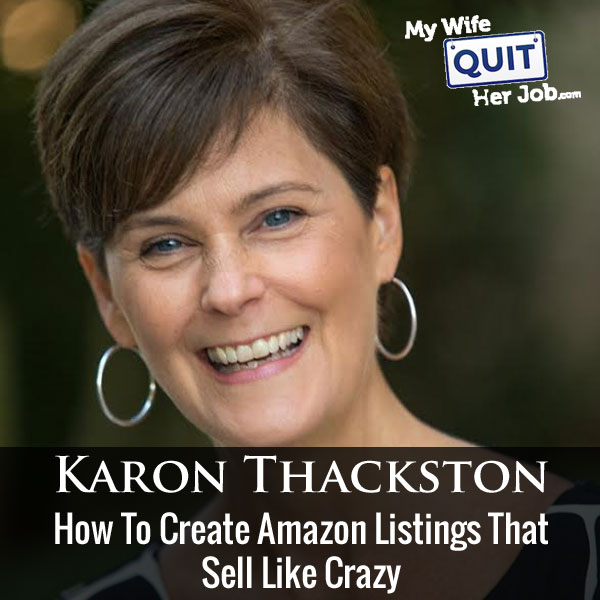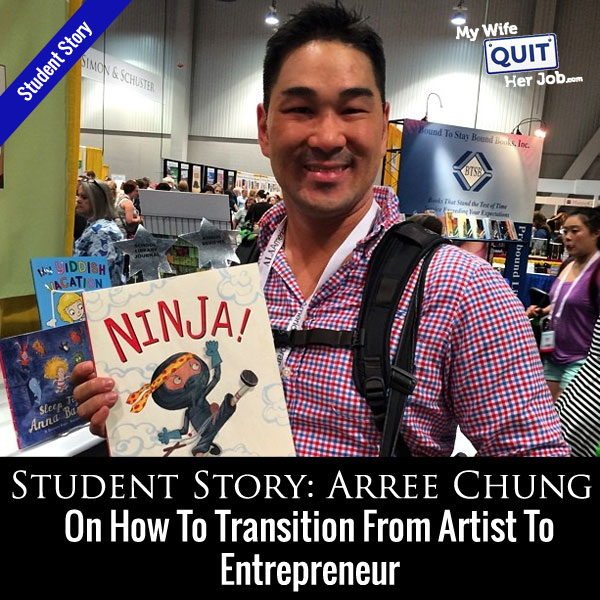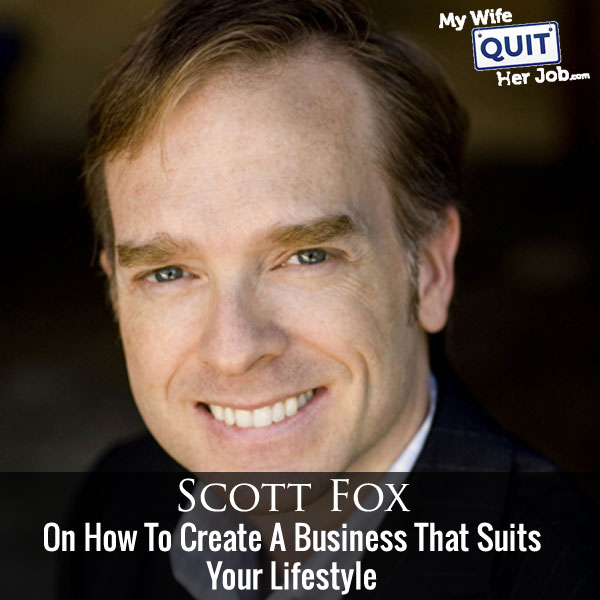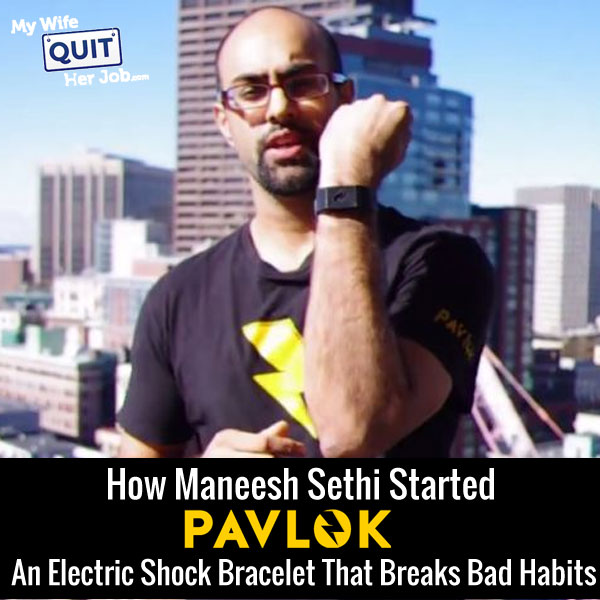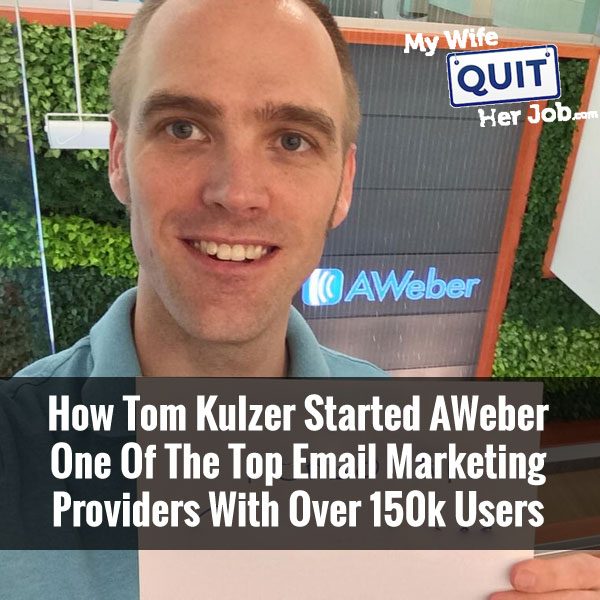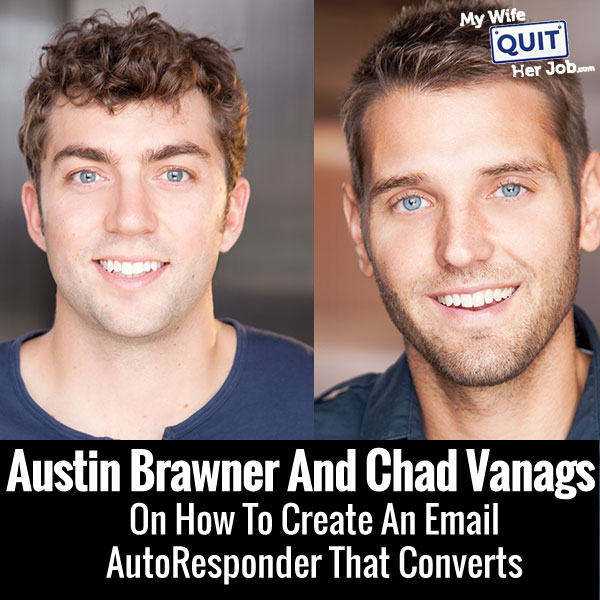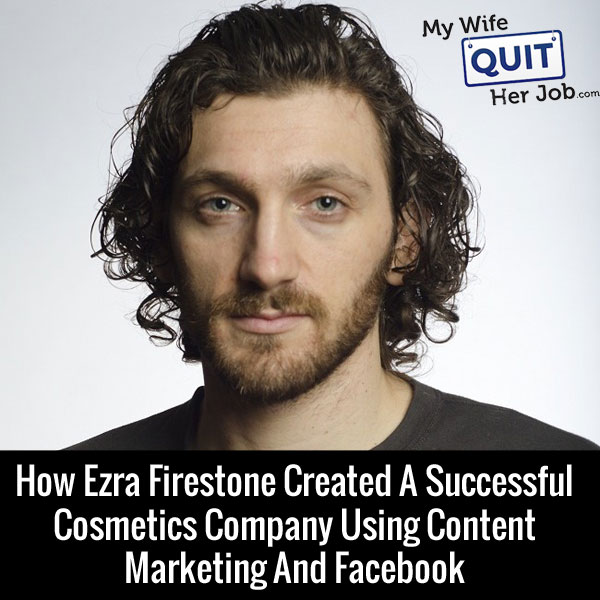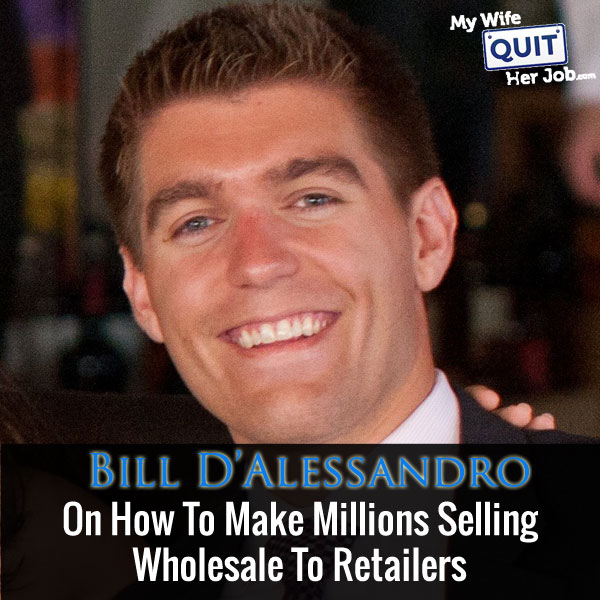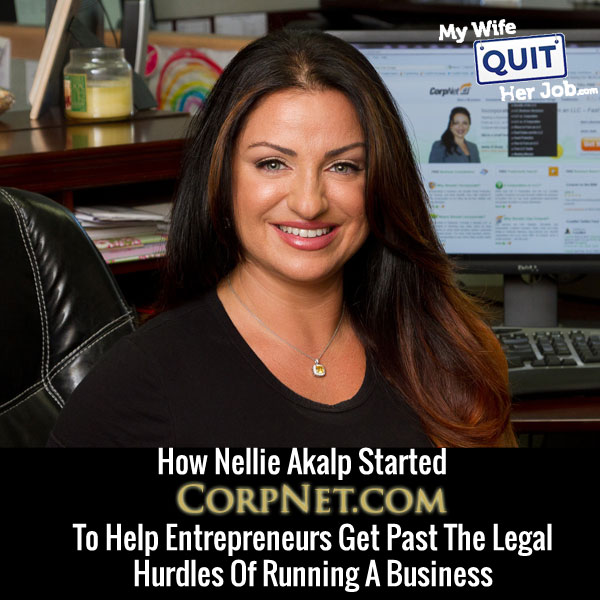Podcast: Download (Duration: 52:03 — 71.8MB)
Karon Thackston is the owner of MarketingWords.com where she teaches others how to write high converting copy for ecommerce stores.
She’s been a professional copywriter for 25 years. She’s the author of over 10 books which include popular titles such as
- Ecommerce Copywriting – Proven Strategies For Boosting Sales And Search Rankings Use Coupon Code: steve25 to get 25% off
- Writing With Keywords – Easy Keyword Optimization Strategies For Search Engine Success Use Coupon Code: steve25 to get 25% off
- Amazon Advantage: Product Listing Strategies To Boost Your Sales Use Coupon Code: steveamz20 to get 20% off
She also consults individual ecommerce companies as well.
Recently, she launched an Amazon bootcamp where she walks sellers through her detailed process of keyword research and how to create conversion-worthy titles, bullets and descriptions. If you are interested in this program, Karon’s offering 20% off to MyWifeQuitHerJob listeners.
Click here and use coupon code: BOOT20 to get 20% off
In this episode, Karon is going to teach us how to create Amazon listings that will sell like crazy. Enjoy the interview!
What You’ll Learn
- The most common mistake that newbies make when listing their products on Amazon
- How to properly fill out the keyword fields on an Amazon listing
- The process that Karon uses to list a product on Amazon for conversions
- The most important guidelines when it comes to choosing keywords
- Why you shouldn’t price your products the lowest on Amazon
- How to differentiate your products from the competition
- How to avoid duplicate keywords
- How to find new keyword ideas for your products
- The right way to fill out your product bullet points
- Karon’s framework for deciding how much copy to write for a given product
Other Resources And Books
- Karon’s 4 Video Session Amazon Product Description Boot Camp (Use coupon code: BOOT20 for 20% off)
- Ecommerce Copywriting – Proven Strategies For Boosting Sales And Search Rankings Use Coupon Code: steve25 to get 25% off
- Writing With Keywords – Easy Keyword Optimization Strategies For Search Engine Success Use Coupon Code: steve25 to get 25% off
- Amazon Advantage: Product Listing Strategies To Boost Your Sales Use Coupon Code: steveamz20 to get 20% off
Want To Learn How To Start A Profitable Ecommerce Store?

My course offers over 60+ hours of video and includes live office hours where you can ask me questions directly.
If you want to learn everything there is to know about ecommerce, be sure to check it out!
Sponsors
This episode was sponsored by Big Commerce. If you are interested in starting your own online store, then click here to get 1 month free
Transcript
Now if you enjoy this podcast please leave me a review on iTunes and enter my podcast contest where I’m giving away free one on one business consults every single month. For more information go to Mywifequitherjob.com/contest. And if you are interested in starting your own online business, be sure to sign up for my free six day mini course, where I show you how my wife and I managed to make over 100k in profit in our first year of business. Go to www.mywifequitherjob.com for more information.
Now before I begin I just want to give a quick a shout out to this episode’s sponsor Bigcommerce. Now Bigcommerce is a fully hosted shopping cart platform that allows you to set up your own online store in minutes. And as most of you probably know, I teach a class on how to start a profitable online store. And Bigcommerce is actually one of the shopping carts that I highly recommend in my class. Now here is what I like about Bigcommerce. Unlike other competing platforms, Bigcommerce doesn’t really nickel and dime you with every little shopping cart feature. And when you sign up, you immediately have a fully featured, and extremely powerful shopping cart at your disposal.
Now there’s also an incredible theme store where you can choose from a variety of attractive store designs, so you don’t really need a designer. And they also offer integration with Alibaba which is new, so you can easily find products to sell online. Now if you are interested in starting your own online store using Bigcommerce is as about as easy as it gets. Everything from design, to payment processing is all built in, and you just have to populate it with your own products.
You can literally start your own online store in a matter of hours. Simply go to www.bigcommerce.com/mywifequitherjob, sign up and you’ll instantly receive one month free. Once again the URL is www.bigcommerce.com/mywifequitherjob, now on to the show.
Welcome to the My Wife Quit Her Job Podcast. We will teach you how to create a business that suits your lifestyle, so you can spend more time with your family and focus on doing the things that you love. Here is your host Steve Chou.
Steve: Welcome to the My Wife Quit Her Job Podcast. Today I have Karon Thackston with me on the show. Now Karon has over 25 years in combined experience in marketing, advertising, and copywriting, and she’s actually been helping e-commerce clients get both higher rankings in the search engines and higher conversion rates on their Amazon listings with the power of copy. Now she’s the author of ten books and she runs the popular site, www.marketingwords.com which I highly recommend that you check out.
And today we are actually going to delve deeply into Karon’s techniques for creating a high converting Amazon listing as well as learning about her entrepreneurship story. And with that, welcome to the show Karon. How are you doing tonight?
Karon: Great, how are you? Thanks for having me.
Steve: I am very good. I understand that you just celebrated a landmark birthday. So I was kidding, you told me not to go there and I will not.
Karon: Well all anybody has to do is to check my Facebook page and will immediately learn what that landmark what day it was.
Steve: So Karon I’m just curious, how did you come to specialize in the field of copywriting?
Karon: Oh gosh, forever ago I was in college and started working for the college newspaper at the University of South Carolina. One day there was nobody in the production department. We only had two people to in there to begin with. And it was the back to school issue of the newspaper. So things were crazy and that’s the one that all the local advertisers wanted to be in.
And somebody said, “Look, you are just going to have to write the copy for the edge yourself.” And I said, “Write the what?” And that was the first time I ever wrote copy. Since then I worked at a local radio station filling in during the summer, and wrote copy for radio ads and that grew into TV ads and newspaper and all of the things that build up before the internet. In 1999…
Steve: Did you ever work for a larger firm or was it always independent?
Karon: No, before I started marketing words?
Steve: Yeah.
Karon: Yes, there were a couple of ad agencies that I worked at, and then some a couple of in-house ad agencies as well as some full service ad agencies.
Steve: Okay. And then why— just curious I always ask this question, why did you decide to leave and go out on your own?
Karon: Well I was kind of tired of doing what everybody else wanted me to do and in the way that everybody else wanted me to do it. So that was part of it. And then my husband and I decided that it was time for us to start our family, and I wanted a way to work from home. So we looked into me starting some sort of business at home before we began to start our family, so that we would be ready when this child came and the child never did. But we birthed a phenomenal business and have watched it grow and flourish over the last 16 years. Every time I say that I stop and think, “Men has it been 16 years?”
Steve: That is a very long time especially in internet years.
Karon: It is a very long time, but it just doesn’t seem like it’s been that long at all. Not even a little bit.
Steve: How did you get some of your early clients?
Karon: How did I get some of my early clients? There were online bulletin boards.
Steve: Oh you’re talking of BBSs?
Karon: Yes.
Steve: Oh my goodness! Okay, wow.
Karon: The early, early-dark-cave-man-days internet. And I remember I got some of them through the Target Market magazine Bulletin Board. I used to get some really great clients through the early days when the practice of article marketing was—and submitting to a Brazilian article directory and what not, I used to get a lot of big clients from that. But steadily over the years it’s been a combination of folks seeing me or hearing me on podcasts like yours or webinars or things of that nature, SEO, good rankings, and marketing that I do with advertising or live events or things of that nature.
Steve: How many of your clients would you say are e-commerce focused clients?
Karon: I haven’t done a count in a while, but I will just say it was probably 40-50%.
Steve: So a large percentage are definitely e-commerce focused. That’s great. And in terms of, I know Amazon is becoming more and more popular which is why I wanted to have you on the show, are there—are you finding that you are getting more Amazon clients these days?
Karon: Oh yeah. I mean you can always tell when somebody has some sort of major training going on, if there’s a shift in Amazon. You know maybe you’ve got the dates coming up where the inventory has to come out with additional piece [ph] and what not; you can always see influxes of sales from those particular product listings coming in. You know people that need them tweaked, or people that need them written, we just got over that. Like last month was a launch for another product that happens a couple of times a year and we got blooded fast.
Steve: Okay, and would you say, do you cater more to the little guy or do you have larger clients, or do you like focusing on smaller guys?
Karon: We are kind of in the middle. The newbie sellers that this is their first time out and they are watching every penny that they spend, you know they are trying to do a private label or something to that effect which can be a little bit costly depending on what you are doing. Sometimes it’s a little too high of a price for them. But the ones that are right in the middle, that have established themselves as private labelers, maybe they have two to three four, ten products to their name now, and they are used to doing this, they don’t have the inclination to write the product listing themselves. Maybe they run out of time because they are focused on other things, those are really the ones that we work with the best.
And then we have manufacturers who have their only comp sites and are looking to move those products on to Amazon, and we do a lot of business with those too. Major retailers, big buck stores, national chains, things of that nature, we don’t tend to be a good fit with.
Steve: Okay. And before I get into like some of the details, do you have any cool success stories that you care to share that just kind of demonstrate the true power of copywriting.
Karon: We got a really excellent conversion rate. I guess if I don’t tell you—I don’t have permission to share the details publicly, so I’m not going to give a lot of them. I can tell you what the number is, but I just can’t tell you who the client is.
Steve: That’s perfectly fine.
Karon: About a 14% conversion rate on mermaid tail.
Steve: Interesting, okay.
Karon: That was fun. I actually thought they were joking when they sent out that over. I opened up the questionnaire that we have for clients and went, “Okay.” Never done one of those before.
Steve: So you know when someone comes to you, what would you say is the most common mistake that most people make when listing their products on Amazon like kind of as a newbie?
Karon: Not formatting the keyword, the search term fields correctly, and not understanding what the best use of those fields is.
Steve: Okay. And I think there’s probably some people listening who aren’t familiar with the terminology that you are going to be using. So I’m going to ask that you kind of elaborate some of these at first, and then once the terminology has been established then we can go on. So you mentioned the key words, are you referring to the key words that are being used to search on Amazon?
Karon: Yes, when you create a product listing, you are allowed 50 characters and five different fields labeled search term fields. And a lot of people refer to this as key words not to be confused with the section that you will see right beside that, that says “platinum keywords.” If you are not an invited designated platinum seller, it doesn’t matter what you put in the platinum keyword fields, they are not going to work for you.
So you are looking at the ones labeled search terms. And there are five of those fields; you get to put in as many key words as you can fit 50 characters per line, maximum. And then you also have your product title, which is I believe the technical name when you add the product is, product name, but most people refer that as a title. So that also counts as a key word field.
Steve: Okay. And you generally don’t want to duplicate your keywords in these fields, is that right?
Karon: You do not want to duplicate keywords in these fields. And Amazon makes quite clear in several different places that they are working with individual key words that can appear in any order and that it’s not necessary to use commas in there, as a matter of fact they make the statement that “Amazon system ignores punctuation in the key word fields.”
So you just want to put a space between each one. But what most people do is they would go in, they are Google sensitized, so they go into these five fields for the search terms, and they put one key phrase in each of the five fields. So if you are talking about dog treats maybe the first field they would have gourmet dog treats, and then organic dog treats, and beef dog treats, and whatever and whatever. So it’s a huge waste of space.
Steve: You know what Karon— oh sorry, go on.
Karon: I was going to say there’s the duplication of the word dog treats to start with, but they are not filling those spaces with keywords. You have all of that space. I always try to put as many keywords, individual keywords in there, as possibly could fit in order to drive traffic.
Steve: Okay, I was just going to say, I think we are jumping the gun a little bit. I know you—I understand like if I were to come to you for a copy, you probably have some sort of process in place before we even think about the nitty-gritty like the key words, right?
Karon: Keywords come first.
Steve: Yeah, so I felt what I would do is let’s do a hypothetical case study. Let’s say I came to you, and I wanted you to write a copy for some of my handkerchiefs, what are some of the questions that you would ask me, and what is the kind of mindset that I need to take in order to effectively create an effective high converting listing on Amazon?
Karon: The first thing that we always take into consideration is the mindset of the Amazon site visitor, unlike somebody that is going to Google to search for something. Maybe it’s information, maybe it’s entertainment, you know it could be a dozen different things. When a person shows up on Amazon, and does a search, it is with the exclusive purpose of making a purchase, or at some point in that buying process. Nobody goes to Amazon to look up TV listings or find information about whatever. They are here to buy something, eventually or right away.
So we want everything about these handkerchiefs to be appealing to a shopper, not just to a “site visitor,” but to somebody who is in the mood to buy. So it’s a lot like organizing a display in Macy’s or some other physical retail store. You want to make everything as attractive as possible, including your words. We start with the keywords, because those need to be incorporated in the title, and then we also naturally would include those in other areas of the Amazon product listing, just because they are going to pop up anyway. It’s hard to talk about handkerchiefs, without using the word handkerchiefs.
Steve: That is correct.
Karon: We want to find out what makes these handkerchiefs special. If you just go to Amazon and you type in handkerchiefs, you are going to get millions of options. So if we have organic cotton handkerchiefs, or silk handkerchiefs, or personalized and monogram handkerchiefs, so it’s a bundle of different types of handkerchiefs. Or whatever it is that makes these particular handkerchiefs special, and we start to narrow it down. Okay, so if it is not just ordinary handkerchiefs, they are organic silk handkerchiefs imported from Thailand or whatever. How many of those are on Amazon?
Well, if you’ve got more than a couple that are coming up in the search results, you need to start looking at ways to differentiate that product even further. What will make you standout as different as or better than all the other listings for organic silk handkerchiefs on Amazon.
Steve: What are some of your guidelines, when you say there’s too much competition and you want to narrow down more. Like how many identical listings would you expect to see before you make that determination?
Karon: I would say that if the first page of Amazon search results are filled with identical or extremely similar products, you need to start thinking about ways to differentiate yours from everybody else’s.
Steve: Okay.
Karon: Yeah, so we are just looking — I mean it doesn’t take 15 different ways to differentiate your type, it only takes one thing. And a lot of times it can be done in one word in your title, instead of organic silk handkerchiefs, if it’s the set, you can put a set. Because not everyone is going to have that, if you have some special packaging, it comes in a gift box, maybe it’s monogramable or has special trim around the edges. I’m coming up with these off the top of my head, but whatever it is that yours has that others don’t have. Or you can look at ways to just position your product differently.
If it’s absolutely identical to everything else that’s on Amazon, then maybe you position it as a gift item. Or maybe you position it as perfect for christenings or something to that effect. But keep looking until you find something about your product or service that can set you apart. When shoppers get on Amazon, and you are looking at a thing right now, anything silicon is huge. You can go look up silicone cupcake liners, and you will just have pages and pages of the exact same things.
And when that happens, what you put on the page is over looked by a lot of shoppers, because they are defaulting to price. And you don’t want them to default the price, because if you play the price game, it’s always a race to the bottom. One person under bids or under cuts somebody else who is on the listing, and then may come back especially with automatic re-pricers, and before you know it nobody is making any money at all. So you don’t want to get caught up in having all of your shoppers looking at price, because everything else sounds exactly the same as the last 25 listings they’ve looked at.
Steve: So you are looking for keywords that differentiate yourself from the competition. And are you including this in the title tag, or the keyword sections or both?
Karon: Well, it’s not — there’s the product name, is that what you are talking about?
Steve: That’s what I mean yes, sorry.
Karon: Yeah, well, you wouldn’t put them in both, because you don’t want to duplicate. We would either put it in the title, or put it in your search term fields, but you wouldn’t do both. But yes, if it’s a viable keyword, then you would put that in there. If it’s something like, somebody else has gold plaited whatever, and yours is [inaudible 00:19:55] whatever, then you can use that. But even if it’s a matter of positioning it as a gift instead of necessity, gift may not necessarily be a good keyword, but it would be good for attracting folks to click on your listing instead of somebody else’s.
Steve: Okay, so once we have the keywords down, what is then the next step?
Karon: The next step is to finish your listing. And while these keywords are going to naturally appear when you are writing your bullets and your product description section, it is not necessary contrary to popular belief, to put them in there for the sake of Amazon, it’s so funny. I guess maybe a year ago, I was doing summer search in Seller Central about this very thing. And I found in seller support where Amazon list what is automatically included and indexed for search, and what is not indexed for search. And I have in there what used to be just a bullet in a bullet list, that said, ‘Bullet points and product description copy are not indexed for search.’
Steve: Okay.
Karon: Because I’m doing a webinar about this, so I went the other day back to that link that I’d saved to get a new screenshot of that. And they are trying to get that point across to people so much, that they have now moved that bullet out of the list and put it in a yellow highlighted box, so that people can see and it’s so funny because there’s this huge debate about whether that’s true or not. And I just shake my head and wonder why people would think that Amazon would not be truthful about that particular thing.
Steve: It’s funny because I have encountered listings that have gigantic text box for the bullet points. And at least on one of the forms that I frequent, this guy said that increased the traffic for his listings when he started doing that. So I mean no one knows for sure, but apparently if Amazon says it’s not, then it’s probably true I would guess.
Karon: Well, I can’t imagine why they would say something like that; I mean their whole purpose in life is to make lots and lots of money. So if they tell you that bullets and descriptions are not indexed for search when they really are, that means that you are going — if you follow that advice you are going to have less of a chance of ranking on Amazon. So that means that they are going to have less of a chance of you are selling as much as you could possibly sell.
So I don’t know, you are absolutely right, we will never know everything that’s in Amazon search ranking algorithm, because then it could be easily manipulated. And I do know for a fact, that the search ranking algorithm is not static, it is dynamic. Meaning that it doesn’t always operate the same way every time, which was very interesting to me, as it moves in shifts, and mops, and people type in different things and what not. It is actually changing as the results show up every time.
Steve: Okay, so we were just talking about bullet points, what are some of your best practices for these bullet points?
Karon: I like to put the benefit first, most copy writers are taught to do features and benefits. You tell them what it is, and then you tell them why they should like it. But when it comes to bullets on Amazon, I have found that putting the benefit before the feature works better, because it captures attention.
So instead of saying — let’s see, I’m looking at a bottle of water that I have on my table right now as we are talking. So instead of saying that this bottle of water or this bottle is — won’t add anything to the taste of my liquid. It’s made from a particular type of plastic, so that whatever beverage you put in there is going to be absolutely unaffected by the plastic. You won’t get that buckeye [ph] chemical taste.
Then that’s what I would probably start with, is something about not having a buckeye chemical taste. Edward [ph] had a water bottle that made you scow when you drunk from it, it probably had this type of chemical or that type of chemical. No worrying about that with this particular bottle. If you have an exfoliator, those are very popular right now. The ones you’ve probably see them on TV, or maybe your wife paid more attention to it that you didn’t.
Steve: Yeah, I don’t know what you are talking about, but yeah go ahead.
Karon: With your little pedicures and the automatic rollers and you use them on your heels and what not. So instead of saying this exfoliator gets red of dry dead skin, you could start the bullet with the benefit. Show off — you are saying, get your sexy sandals out. Show off your foot flops this summer, go bare foot with confidence, that’s what they are looking to do. And then you can tell them about some of the features of this particular exfoliator.
Steve: Is it even important to mention the features, if you just mentioned the benefits, would that be good enough?
Karon: Depends on what it is, for some things folks are looking for specific features. Maybe they want — for these exfoliators, one of the biggest complaints is that they are not powerful enough. That if you apply even the least amount of pressure to your foot the roller stops. So it’s become a selling point to list the power elements of the motor. How many amps it has, how many watts it has, how many revolutions per second the little roller goes around. So they know how fast it’s spinning and things of that nature, so it depends on what it is. For a mermaid tale, no you wouldn’t have to do that.
Steve: So I’m just curious, so if I would have come to you and I was selling these exfoliators, and I want you to write a product description and bullet points. Do you actually go in and do the research and look at all the reviews on Amazon? Like how do you found out what are the most important benefits that you should feature?
Karon: There’s a lot of different ways, and yes the reviews and the questions if there are questions available for the product listing are very important. But we don’t spend all of our time on Amazon; we go out online through Google or different types of other websites that sell the original [ph]. They have reviews and comments online on lots of different websites, so we will look at that as well. If it’s something that is a brand name product, then we can also look at that particular website to see if we can find any information that’s not being used on Amazon or other ideas for keywords too.
Steve: Okay, what about, in these bullet points do you — let’s say you’re private labeling something. Would you mention your brand in any way in these key points?
Karon: Sure most of the times we do, there’s plenty of room in the bullets most of the time to be able to put the brand in there. And especially if that’s important to the seller, they are going to expand on that brand later; you would want to include that.
Steve: Okay, because I would imagine like let’s say you mentioned these silicone products. Like you said there are so many of them. I guess it would be to your advantage to try to brand something right, in order to stand out. Is that what you would do, or would you do that in the product name? Or would you do that in the bullet points?
Karon: It depends, I mean Amazon says that the brand can go in the product name — I mean it’s a case by case basis. Sometimes I’ll put it in there, other times when we do the listings we choose not to put it in the product name. A lot of it depends on space, especially in kitchen Amazon is really cracking down, and they have soft launched a new set of parameters where you would get a hard stop at 100 characters for the title, which is what they’ve changed the style guide to.
Well, the title has always been 100, the bullets were not 100. We’ve had several clients that are existing long time sellers and newbies as well, that have gone in and found hard stops in the kitchen category for each of the bullets at 100 characters. So it depends, if we are really tight on space and they are bumping, they are getting errors because the title is more than 100 characters when they try to interact, then we may take out stuff like the brand name and things that would not directly impact the sale.
If it’s not a nationally known well recognized brand, then chances are people aren’t going to be searching for that anyway. So that could always go in a keyword field. Or they recognize the brand field anyway as a matter of fact, as already searchable.
Steve: I was thinking more in terms of establishing a brand rather than having a recognizable brand. Okay, so in terms of these bullet points — so okay, so you mentioned benefits, followed by features, what else do you include in this bullet points?
Karon: We like to try to include some life experiences. And this is where being a real advertising geek and studying infomercials can come in handy, because that’s how infomercials makes tons and tons of money. They don’t just sit there and point to this amazing juicer or whatever the product maybe, and show you all the features and pull out all the parts and the attachments and the accessories, and show them off and explain how powerful they are, and easy to clean and what not.
No what are they doing? They are standing there, talking about your daily routine and how you can use this juicer, first thing in the morning when you in a rush, and you are trying to get out the door, it’s a quick breakfast. You can just zip some fruits and veggies through it, stick in your to go cup, run out the door and have a nutritious, delicious, filling breakfast on your way to the office. And when you are at home at night and you get some cravings, you can use the same juicer to whip up some smoothies that are thick and frothy and satisfying. You can use fruits and juices so you get that sweet fix that you’ve been craving all day long without wrecking your diet.
These types of things compacted of course, because of the space limitations are really awesome for drawing people into your bullet points, because they can relate to that when it includes things that would apply to their own lifestyle.
Steve: So do you think it’s more important to do this in the bullet points as opposed to the product description itself?
Karon: I do it in both.
Steve: Okay.
Karon: And the reason being that the bullets are way more read than the product description section is.
Steve: Okay, so let’s see what do we got so far, we got benefits, we got features, we got storytelling, is that accurate or?
Karon: Not necessarily storytelling, more just relating to life experiences, their daily routine. However these products fit into their daily lives.
Steve: Okay, and do you kind of include calls to actions in these bullet points, like what else do you use?
Karon: Not calls to action, we try to stay as close to Amazon’s terms of service as possible. You can put guarantees in there, they have actually changed that in most of the style guides that they used to not be able to put warranties and guarantee information in bullets. But the rest of it should not contain “Marketing materials.” They even go so far as to say, the bullet point section is not a place for paragraphs. So we try to keep it generally in check with what Amazon is doing.
Steve: Okay, is that relatively new? Because I know like a lot of listings I see have a lot of those things in them. And they always have like a call to action on like the last bullet point.
Karon: It’s not new, but you know as well as I do, that Amazon has not proven itself to be a very good enforcer of its own rules. So most of the things that Amazon tells you to do, people have been doing for years and getting away with it, and that’s why when I do things like enforcing character limits in the kitchen category or starting to [roll barrel] [ph] softly in several different accounts people are just horrified. Because now all over sudden they didn’t even know Amazon had these rules before, because nobody told them, and they didn’t bother to check. So now they are being forced to be accountable to rules and regulations that they didn’t even know existed before.
Steve: Okay, so in terms of, when you are writing these bullet points is there a specific order that you go in, or does it kind of not matter?
Karon: It depends on the product as to whether it matters or not. And I don’t know that there are any specific criteria that I could tell you, usually when we go through and evaluate the information that the client sends, whether it’s from a manufacturer or things of that nature, all the nitty-gritty about the products, if there’s a logical order for bullets, for trying to walk the customer through some progression of something, maybe it’s a system, or this product is something that can help them accomplish something over time. We may go in, in that type of a series, but one thing that you can actually test, when it comes to bullets is rearranging them to see if that helps your conversions.
And that something we do regularly for clients even if– if the bullets were not written in any particular order, switch them up. People don’t read everything on the page, they never do. Typically in a paragraph they are going to read the first few words and it’s the same for bullet points. So if they didn’t get past the third bullet, because they got tired of reading and they are scheming down to a different section of the page, they may not have even seen what you had in the last two. So switching them up and doing some tests to watch your conversion right, is a good way to tweak that sum and maybe get a couple of extra sales out of it.
Steve: So what’s your methodology? You just like in the beginning of the week you change it, wait a week, change it again just measure the conversion rate? Okay.
Karon: Well, I mean not necessarily I’ll take that back. We can’t wait a week or whatever, but usually we tell clients to watch the traffic levels, because you want to give it time to have an equal amount for each change that you make. So rather than saying just wait a week, if the first one had been there and got 1,000 page views, then when you put the next one up, wait until it has at least 1,000 page views before making another change.
Steve: Okay, what I was trying to get out was, you are not really split testing these, right? It’s one change, wait ‘X’ number of page views, switch it up, look at the page views, even though there could be some seasonality and what not that you can’t really account for right?
Karon: Yes, and — I mean if this was something that — if it was a product that was seasonal, I would do your testing during your busy time. Otherwise you are going to have a hard time measuring even if you wait, it may take you a very long time to get the same number of visits to that particular page in your off season. So if you had swim goggles and its February, you just probably need to wait until spring before you start doing some testing.
Steve: Okay, and in terms of the product description, do you find that changing the copy around there really makes a big difference to a listing?
Karon: We have found in certain cases that changing that copy up can make up a big difference. And most of the time, this is if it’s not positioned in a way that worked out how we thought it would work out. We did a food scale one time, and thought of positioning it for folks who were on particular diet, low carb-diets or weight watchers or [inaudible] [00:37:19] or whatever, because those are so popular. And that didn’t work out well, and we ended up having to change it.
So when we took out that positioning of that food scale, we had to change the product description, because it was also written to support the title on the bullets, that are dealt with using a food scale when you are on some sort of diet.
Steve: Okay, but in that case it seems like you changed more than just a description, right?
Karon: Yes, because it was the whole concept of the product that didn’t work out how we wanted it to, so we had to change everything. We have done product description changes — have we done product description changes? Just the product description — no…
Steve: Well, let me ask the question in a different way. How much time do you focus on the product description, and how long are your product descriptions typically?
Karon: Product descriptions it depends on what we are writing for, if it’s a private level description, we will push the 2,000 character limit.
Steve: Okay.
Karon: If it’s something that is more of an everyday type of thing, if we are writing for somebody who has personalized toothbrushes or whatever, I’m pulling that off the top of my head. Those don’t take a lot of explaining. We look at — what I call my face formulae, familiarity, audience, cost, and education. And that goes into play with just about every product that we write for. If their audience is not very familiar with this product, or maybe they’ve seen it, but they don’t know all the details about it yet.
If the audience is one that simply demands a lot of information instead of generally not needing as many details. If the cost is higher, if it requires some education, if it’s something brand new, if it’s something complicated. All of those things go into play when we decide how much copy is needed to write. We’ve done jewellery stores that had excellent results, and their product descriptions were probably — it was about a paragraph, so maybe 100 words. And when you get up to 2000 characters that’s more of like 350 or 375 words.
Steve: Okay so just to summarize what you are saying it seems like you have this formula called “FACE.” F stands for Familiarity, A-stands for—what does A stand for?
Karon: Audience.
Steve: Audience. C stands for Cost and E stands for Education. So it requires—if it’s more expensive it requires more education. If the customer is not familiar then you need to turn to write a longer product prescription. Is that kind of accurate? Okay. And I see listings with graphics in the product description, but I’ve never been able to put those in myself. How do you get graphics in there?
Karon: There are only two classifications of sellers that are allowed to use graphics. Those who are registered vendors with Amazon, which means that Amazon is purchasing your products wholesale from you. Those people can also sell through their own seller account, but they don’t go through seller central, they go through vendors central.
And registered vendors are allowed a lot of flexibility including having images and or videos in the product description section. The other category of seller is called an A plus seller and that is highly exclusive invitation only. And those folks get way more flexibility than vendors get, and they can have images and videos and all sorts of other things that’s typically only for major national brands.
Steve: And what about platinum status? You mentioned that earlier on in the interview.
Karon: Platinum status I have actually not found out a lot about. And what I need to do, we don’t typically we don’t get into all the account types and whatever, we just—so how to write the product description for those particular things. I don’t know that platinum sellers get any flexibility in title link, their bullet link, their bullets included in the product description. But they do get the extra keyword fields.
Steve: So anything special that you do to actually get the Amazon listing to rank in Google search?
Karon: No. Not so much, I mean generally what we do already we are including key phrases in the title where they just happen naturally in the bullets and in the product description. But Google is looking actually at the html code behind the page. So if you look at the Amazon product listing page and you scroll from the top all the way down to the bottom, Google is looking at the entire page, not just the title or the bullets, and the product description.
So everything else that’s text on that page whether you can see it or you can’t, Google takes into account. So in the grand scheme of an enormously long and complicated Amazon product detail page, the copy that you’ve written really doesn’t take up that much space. The keywords unlike a regular web page, the keywords that you put into your search term fields are not visible in the code, so Google doesn’t see them. Those are only for Amazon internal use.
The product name is going to show up in the code as the title tag for Google and also as the meta description tag. So Google typically if you do a search for a product that you know is on Amazon and you see that listing show up on Google, what they typically you are going to do is pull text from some other portion of the page so that the title tag and the description tag don’t match. That could be anything. Maybe it’s something you’ve written. Maybe it’s something out of a review.
Steve: Okay. Here’s kind of a random question I was just thinking about, a lot of people who sell on Amazon also have their own shops. So is good product copy—would you say it’s more important on your own independent site or on Amazon? Meaning if you were to focus on product describing grade copy, is it more important to do that on your own site?
Karon: Well it depends on what you mean by important.
Steve: What I mean by that is that you don’t want to include the same copy on your Amazon description as on your site because that will be like duplicate content, right?
Karon: It could be. Amazon is such an enormous site. If you are searching for a physical product chances are you are going to have more than one Amazon page show up in the product listing, because it’s just Amazon and everybody shops there practically. If I would say that, copy on an individual e-com site would probably have more impact on Google, because there would not be as much on those product pages typically as there is on an Amazon page. There’s a lot of code for Google’s, but to surf through and digest on an Amazon product page.
If you go to an e-com store, and you are clicking through you know from a category to a sub category to a product page, you may have depending on the page, 50 words in the product description you know, 100 words sometimes you got tabs at the bottom with more information and what not. But because there’s not the suggested products and the Q&A and the product reviews and the “people also bought” you know all of that is complicating an Amazon page. So I think for SEO purposes, it would be more impactful on Google for that property to be on an e-com page than on an Amazon page.
Steve: So just curious, are all the principles that we’ve kind of talked about, are they applicable to copy on your own personal e-commerce site as well?
Karon: Most of them yes.
Steve: And so would you actually recommend using bullet points on your personal e-commerce site, kind of like the way— okay.
Karon: Yes. Bullets are awesome in an e-com environment.
Steve: Okay. And this is kind of using the same principles for the bullet points as on Amazon for your e-commerce to improve conversions?
Karon: Yes you can. I always—one of my favorite saying is, “You should taste that.” But yeah, I mean you could certainly start up that way and test it and see what happens. I don’t think that most traditional e-com stores would have bullets that are as long as what we see on Amazon these days.
Steve: Sure. Okay. And this is just kind of like another random question. How does it differ when you are trying to optimize something for Google versus Amazon? Like what are some of the main differences?
Karon: Amazon is its own universe. There are no outside influences that we know about on Amazon internal search engine. They pull from fields that they designate, that are located on their site. You can’t build link popularity to your Amazon page and have it show up higher in Amazon’s internal search engine because outside forces don’t have any bearing on it. Amazon is strictly individual keyword based. And as far as keywords go, I mean there are other elements that cause you to rank higher; your sales ranking, your seller feedback and blah, blah, blah, but as far as keywords go.
And in Google there are many, many outside influences beyond your website that can impact where you rank on Google search engine; social media, blogging has a bearing, back links have a bearing, tons of different elements go into this. The navigation of your site which would be on page element, that doesn’t have to do with key words or copy. So Google has a much broader algorithm than Amazon does.
Steve: It seems like Amazon algorithm still is pretty basic at this point, right?
Karon: It’s getting more simple every time they make changes. It used to be very complicated to write SEO copy way back when– and the more sophisticated Google algorithms gets, the easier it becomes to write great search engine copy.
Steve: Okay. Hey Karon we’ve been chatting for quite a while. Everything we talked about today, I understand you have a book that kind of covers some of the basics of Amazon and how to write great copy, what are some of the books that you’ve written that you would recommend to the audience if they are interested in this for specifically for e-commerce actually.
Karon: Specifically for e-commerce, I have one called e-commerce Copywriting, that goes through from creating a keyword based navigation all the way down to ideas for generating product copy and things of that nature that’s been selling for years now, and it is updated regularly so that it is current.
And there’s also for those that are specifically interested in creating Amazon product listings, there’s Amazon Advantage which is my product strategy guide that walks you through everything that we’ve talked about here, and a whole lot more including the entire system that we use for keyword research for Amazon and formatting those fields, so that you get the most impact that can drive the most amount of traffic through the keywords.
Steve: Okay. And if anyone is looking for your services or they want to contact you where can they find you?
Karon: www.marketingwords.com.
Steve: Okay and do you have a contact form there where people can reach you?
Karon: Yeah sure I do.
Steve: Awesome. Okay. Well Karon thanks a lot for coming on the show. It was really great to see how the mind of a copywriter works with respect to Amazon.
Karon: Thank you Steve. It’s always a lot of fun to get together with you. And I understand you have a landmark birthday coming up, so happy birthday early.
Steve: I do. Thank you. I will not reveal my age however.
Karon: Me either.
Steve: All right Karon take care. Thanks a lot for coming on the show.
Karon: Thanks a lot, see you later.
Steve: All right see you.
I hope you enjoyed that episode. Selling on Amazon is super hot right now and there are many little tweaks that you can make to increase your sales dramatically, and copywriting definitely makes a huge difference.
For more information about this episode, go to www.mywifequitherjob.com/episode74, and if you enjoyed this episode, please go to iTunes, and leave me a review, because when you write me a review, it not only makes me feel proud, but it helps keep this podcast up in the ranks, so other people can use this information, find the show more easily, and get awesome business advice.
It’s also the best way to support the show, and please tell your friends, because the greatest gift that you can give me is to provide a referral to someone else, either in person, or to share it on the web. Now as an added incentive, I’m always giving away free business consults to one lucky winner every single month. For more information, go to; www.mywifequitherjob.com/contest. And if you’re interested in starting your own online business, be sure to sign up for my free six day mini-course where I show you how my wife and I managed to make over 100K in profit in our first year of business. Go to www.mywifequitherjob.com for more information.
And once again, I just want to thank Bigcommerce for sponsoring this episode. Bigcommerce is one of the best shopping carts that I personally recommend, if you want to start your own online store without having to worry about anything technical. They’ve got an incredible theme store, where you can choose from a wide variety of attractive store designs, so you don’t need to hire a designer. And they also offer integration with Alibaba so you can easily find products to sell online.
So bottom-line everything from design to sourcing, to payment processing is all built in and you simply have to populate it with your own products, and you can literally start your store in a matter of hours. Simply go to www.bigcommerce.com/mywifequitherjob, sign up and you will instantly receive one month free. Once again the URL is www.bigcomers.com/mywifequitherjob. Thanks for listening.
Thanks for listening to the My Wife Quit Her Job podcast. Where we are giving the courage people need to start their own online business. For more information, visit Steve’s blog at www.mywifequitherjob.com.
I Need Your Help
If you enjoyed listening to this podcast, then please support me with a review on Apple Podcasts. It's easy and takes 1 minute! Just click here to head to Apple Podcasts and leave an honest rating and review of the podcast. Every review helps!
Ready To Get Serious About Starting An Online Business?
If you are really considering starting your own online business, then you have to check out my free mini course on How To Create A Niche Online Store In 5 Easy Steps.
In this 6 day mini course, I reveal the steps that my wife and I took to earn 100 thousand dollars in the span of just a year. Best of all, it's absolutely free!


